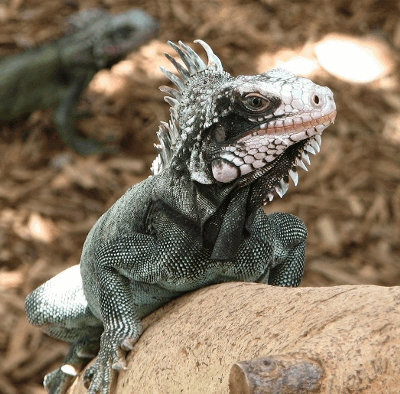Discover the Majestic St. John, USVI, Iguanas

St. John is renowned for its breathtaking beaches, crystal-clear waters, and lush tropical landscapes. But while it's easy to get lost in the beauty of this Caribbean destination, another fascinating aspect of the island awaits exploration: the majestic St. John, USVI, iguanas. These enigmatic reptiles add an extra layer of intrigue to the island's natural wonders, and you're very likely to come across them while you're here.
The Green Iguana: A Remarkable Resident
The green iguana is the primary species of iguana found on St. John. Known for their striking green scales, these reptiles are large and can grow up to six feet in length. Their impressive size and distinctive appearance make them a captivating sight for both locals and tourists alike.
St. John's warm and humid climate provides the ideal habitat for green iguanas. The island's lush vegetation, including mangroves, coastal shrubs, and forests, offers them an abundance of food sources and shelter. Tourists exploring the island often spot these creatures basking under the Caribbean sun or gracefully moving through the foliage.
Behaviors and Diet
Green iguanas are diurnal, meaning that they're primarily active in the daytime. They are excellent climbers, using their strong limbs and sharp claws to ascend trees and rocks effortlessly. Basking in the sun serves both as a means to regulate their body's temperature and as a social activity, as several iguanas may be found together in prime basking spots.
As herbivores, iguanas have a primarily vegetarian diet, feeding on leaves, flowers, and fruits. Their specialized digestive system allows them to process and extract nutrients from tough plant material, making them well-suited to thrive in their environment.
Iguanas and Island Conservation
As with many species worldwide, green iguanas face threats to their survival, particularly due to habitat destruction, invasive predators, and illegal hunting. On St. John, efforts are under way to protect and preserve these reptiles.
Local conservation organizations and government agencies are working diligently to educate both residents and visitors about the importance of respecting iguanas' natural habitats and not disturbing them. Additionally, initiatives to control invasive species, such as feral cats and rats, are in place to mitigate their impact on the iguana population.
Responsible Tourism
As travelers, it is our responsibility to be mindful of the impact we have on the destinations we visit. When encountering iguanas on St. John, it's essential to admire them from a distance and refrain from feeding them or attempting to touch them. This will ensure their continued safety and help preserve their natural habit and behaviors.
